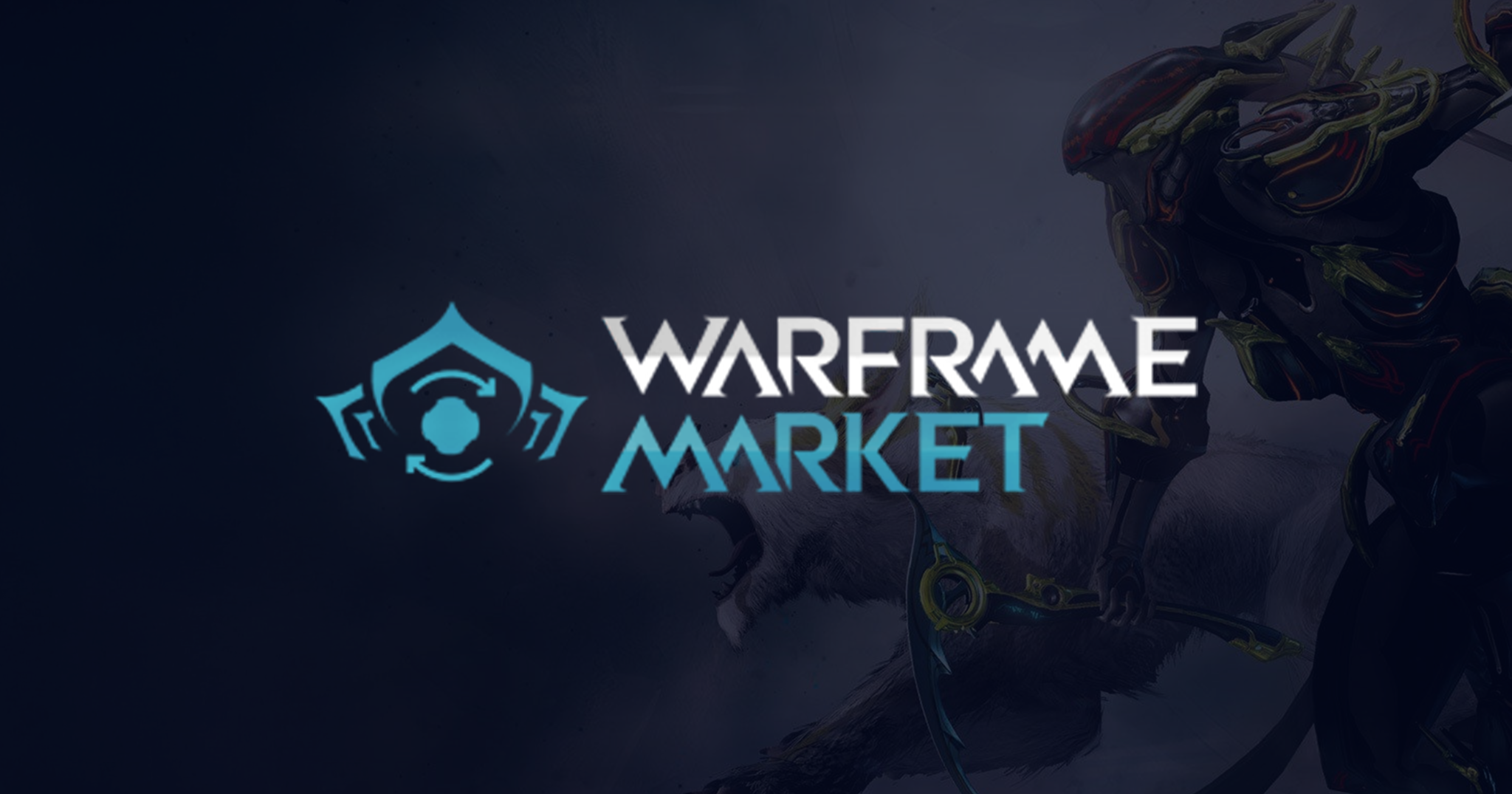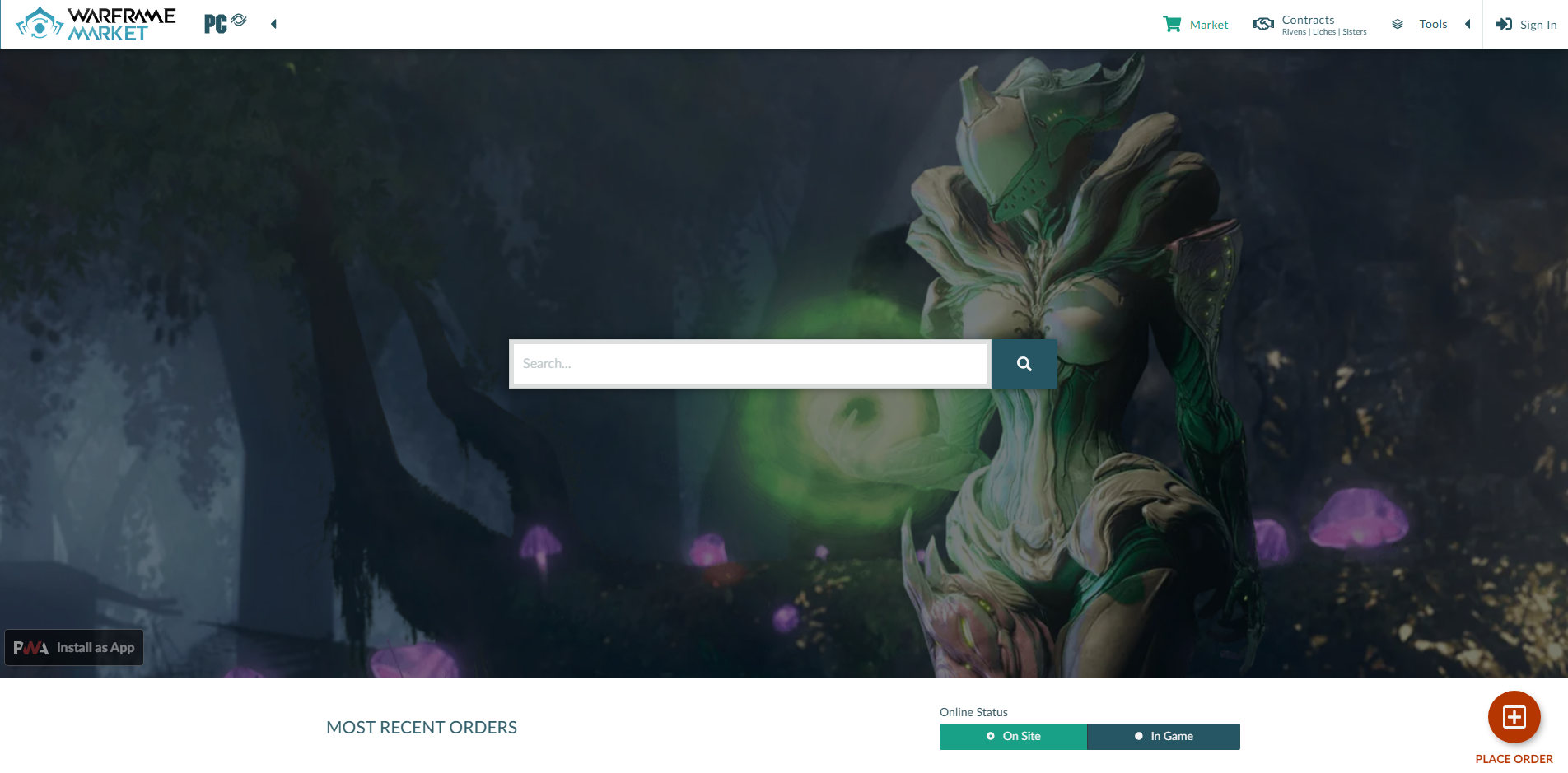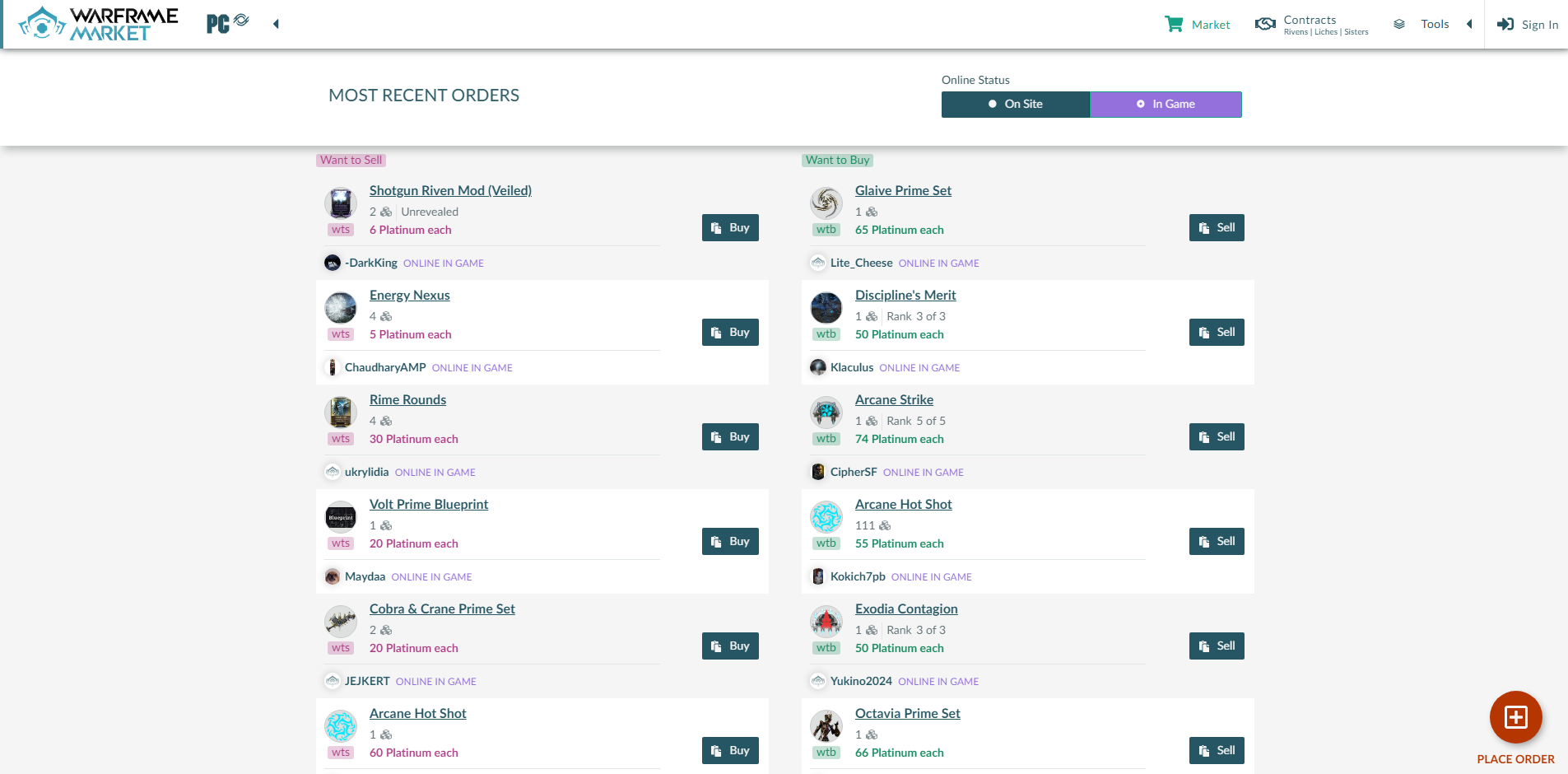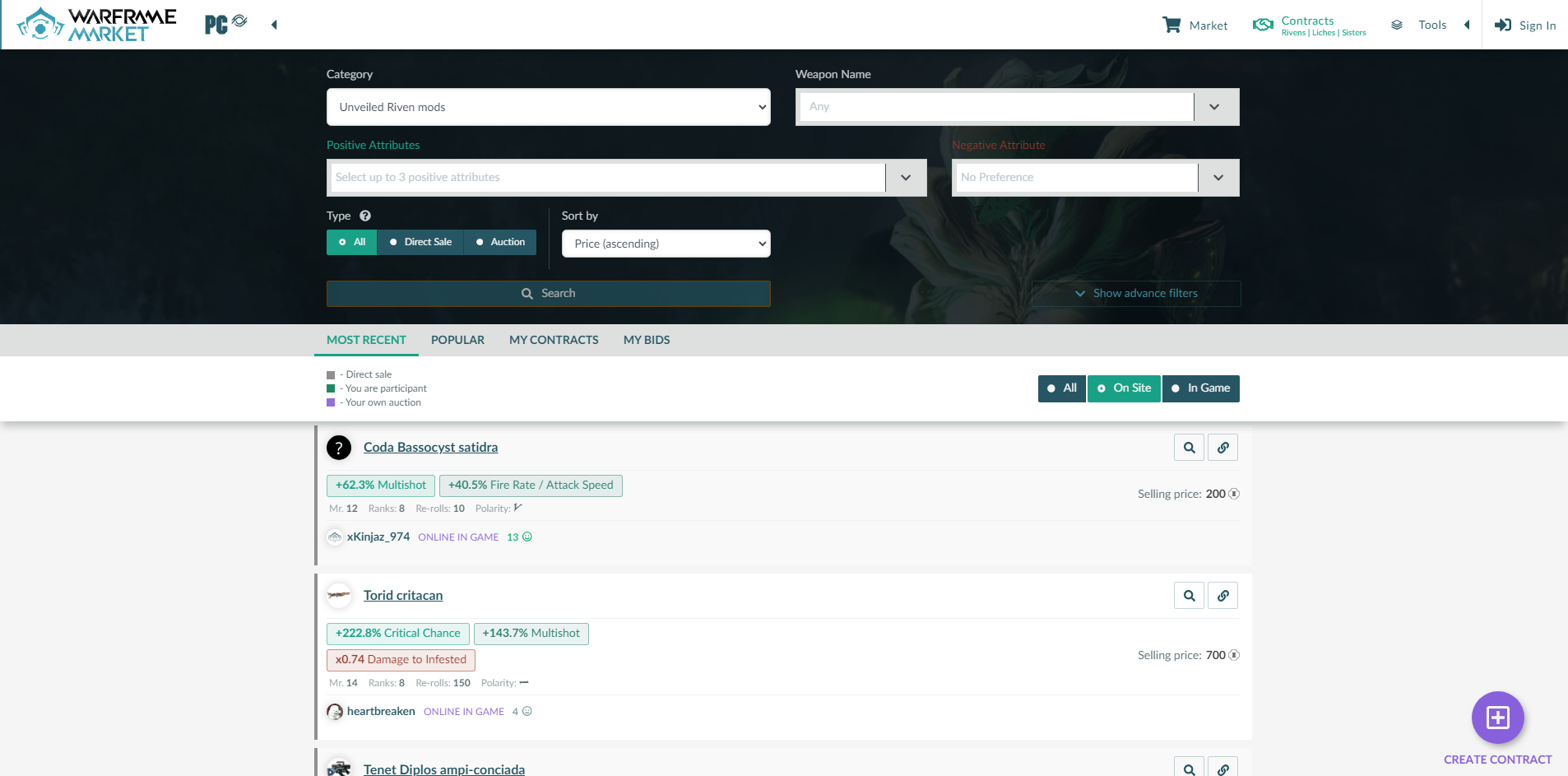
Welcome to March's edition of our Publisher Showcase series! Each month, we dive into the stories and insights of the brilliant minds behind some of the most dynamic websites in our platform.
This month, we had the pleasure of speaking with Kyckyc, the talented creator of Warframe Market, a community-powered platform reinventing trading in Warframe. In the interview below, Kyckyc shares how years of freelancing and startup experience taught him to move fast, build smart, and focus on what truly matters to users. From writing Python bots in his MMO days to engineering a scalable backend used by thousands daily, his journey is a masterclass in turning frustration into innovation.
Dive into Kyckyc’s story below to learn how Warframe Market grew from a simple idea into one of the most trusted tools in the Warframe universe. 👇
First up, can you tell us a bit about your career/life background that led you to start Warframe Market?
I wouldn't say my career directly led me to creating Warframe Market, but it definitely played a role in why I was able to build and maintain it.
It all started a long time ago with a popular MMO. There, I met a talented programmer who introduced me to writing Python bots for the game. That’s what first sparked my interest in programming.
Later, I transitioned those skills into backend development. My first job was at a small startup aiming to break into the ad publishing space (something like Nitro). As with most startups, it didn’t last long.
After that, I worked part-time for a few other startups and eventually ended up freelancing full-time, a role I kept for several years.
You might ask how freelancing and startup work helped with creating something like WFM.
Well, freelancing teaches you how to manage your own time, organize your work, and deliver what clients need, without a boss watching over you.
Startups, on the other hand, teach you how to build MVPs, move quickly, iterate fast, support growing projects, and prioritize what really matters.
Without that kind of background, I think building something like WFM would’ve been a lot harder.

What drove you to create Warframe Market? Did you see a specific gap in the market? Was there a particular insight that motivated you to launch it?
You might not believe it, but the reason was hilariously simple.
I had already been playing Warframe for a while, and one day I decided to try trading. I just wanted to get a few pieces of Nyx Prime — I can’t even remember why I chose to buy them instead of farming them myself, but that part doesn’t really matter.
So, I opened a trade chat… and was immediately overwhelmed. It was total chaos. Tons of messages flying by, people spamming offers nonstop, and there was no easy way to even tell what the average price for Nyx Prime parts was. I looked at that mess and thought, “There’s no way I’m doing this. There has to be a better way to trade.”
That’s when the idea for Warframe Market popped into my head. I decided to channel the motivation I had for building my Nyx set into building a platform to make it easier for me to buy these parts, and maybe make trading in warframe a bit easier for everyone else.
How long have you been running your website and how long did it take from development until it was live?
The first version of Warframe Market was built in about 4 weeks, maybe a bit more if you count some initial planning and wireframe design.
It was a very simple setup: a Flask backend and a Bootstrap-based frontend. It looked bland, had minimal functionality… but it worked! You can actually still find a few screenshots and videos of that first version online, hard to believe it looked like that back then.
Since then, I’ve completely rewritten the backend once, redesigned and rebuilt the frontend, and we’re now in the middle of a third full rewrite, this time moving everything to Go.
How did you decide on the specific features and tools available on Warframe Market?
Like with most projects, there are a few ways to figure out which features to build.
In the beginning, you’re your own user, so you build the tools you need. You’re essentially creating something for yourself, and if it turns out to be useful, others will naturally start using it too.
Later, once you’ve built up a decent user base, feedback becomes your guide. And that means tapping into a bunch of sources: Reddit threads, our Discord feedback channel, polls, web analytics, anything that gives insight into what users want or struggle with.
You have to keep an eye on everything.
Now, at this point, probably someone might say, “Sounds great, but where’s that long-requested feature, Kyckyc?!”
Fair point. We’ve definitely fallen behind on rolling out some of the most-wanted features.
Life threw us a few curveballs and set us back for a while, but we’re back on our feet now.
For more on that, check out question 10. 👈
How were you able to build a strong online presence for the website? (e.g. SEO, forums, PPC, influencers etc)
Honestly, this might be the most boring and uninspiring answer of all: we just got lucky.
It was all horizontal marketing, pure word of mouth. No fancy SEO strategies, no paid ads, no influencers.
All I can really say is thank you to our users.
They used the tool, shared it with others, and helped it grow.
Without them, Warframe Market wouldn’t be where it is today.

What have been some of the most effective tactics to drive traffic to your website so far?
The most effective way to drive traffic to any project is pretty simple: build something good. You need to solve real user problems and focus on being user-oriented first — and then keep the project in good shape over time.
The hardest part is getting that initial audience and momentum.
Like I mentioned earlier, in WFM’s case, it was all horizontal marketing, just people sharing it because they found it useful. No big campaigns, no fancy tactics.
That said, I’d consider WFM more of an exception than the rule. Most projects will need a more robust and thoughtful marketing strategy. But since we’re talking specifically about WFM, that’s a whole different topic.
What are you most proud of in regards to the success of Warframe Market so far? Any major highlights?
I’m most proud of the backend system we’ve built, especially considering the limited resources we’ve had, and still have.
It’s mainly about the v2 backend and infrastructure. We managed to build a stable, scalable, and future-proof tech stack that can be maintained and developed further with a small team and minimal funding.
After all these years, WFM has taught me how to build a truly robust system under constraints, and honestly, that knowledge alone feels priceless.
It probably deserves its own article at some point.

What advice do you have for new and existing website owners that you wish you knew before you started?
It really depends on the size of the project and what resources the owner has — but in general, for anyone starting something new:
- Focus on the MVP — the minimum viable product.
- Don’t overextend.
- Kill the perfectionist in yourself — otherwise, you’ll never finish anything and risk burning out.
- Aim to get 80% of the work done in 20% of the time.
Honestly, again, this could be worth its own article, too many things to unpack just in a few words.
As for owners of well-established websites, they probably already know what they’re doing (and might even know more than I do), so I won’t pretend to give them advice. 😄
What do you like best about being a part of Nitro’s network of premium gaming/entertainment websites?
I don’t want this to sound like a blatant ad, but honestly, I’m not sure how to answer it any other way.
I’ve tried several ad providers in the past, and Nitro has been the best. Not one of the best — just the best.
Here’s what really stands out:
- Top-notch communication. The team is super responsive, they answer questions quickly, handle concerns fast, and are always on top of any potential issues.
- Best terms and conditions I’ve seen.
- A detailed, easy-to-use dashboard with all the tracking, reports, and tools you could ask for and even more.
- And of course, performance. When it comes to ad revenue, Nitro has consistently outperformed every other provider we’ve tried.
These guys are probably going to read this, so — Hello! Love your work. Keep it up! 😄
What’s next for Warframe Market?
We’ve got a lot planned.
The next big thing is a full-fledged mobile app for both iOS and Android.
Alongside that, we’re working on several smaller features like bulk trading, order groups, and other improvements to make the trading experience smoother.
And while it might not sound very exciting, we’ve also been investing a lot of time into our v2 backend system. Half the site is already running on it, and we’re close to completing the rest, including launching a new WebSocket server.Once that’s live, the site will be even faster, more stable, and more reliable.
Plus, the new backend opens the door for building even more cool and unique features in the future.
A big thank you to Kyckyc from Warframe Market. Keep your eyes peeled for more insightful interviews like this in next month's edition of our Publisher Showcase, where we’ll continue to spotlight one of the 500+ stand out websites on Nitro, diving deep into their unique success!
Nitro is dedicated to reinventing website monetization for the gaming industry. Our ad tech platform combines uncompromised user experience, nitro-speed revenue and service with Net 7 Payouts, same-day support and the industry’s fastest ad loading.